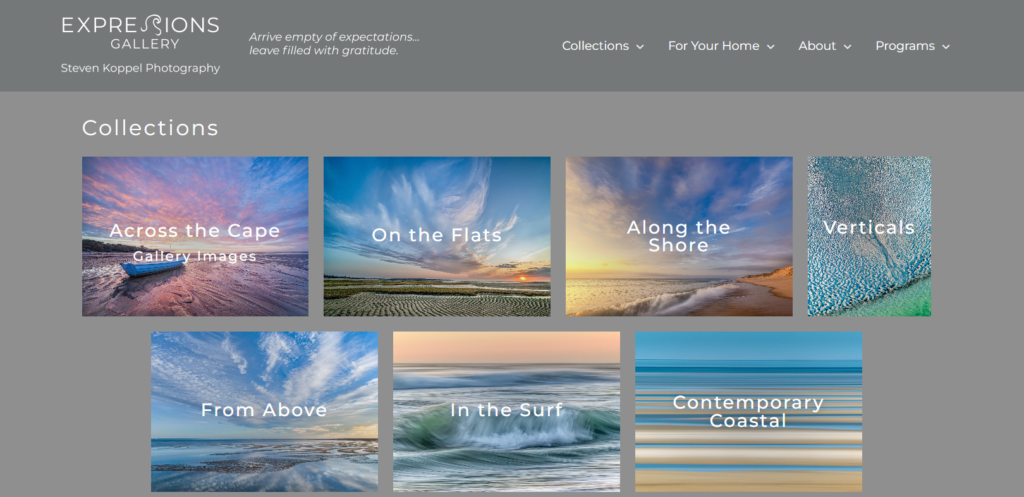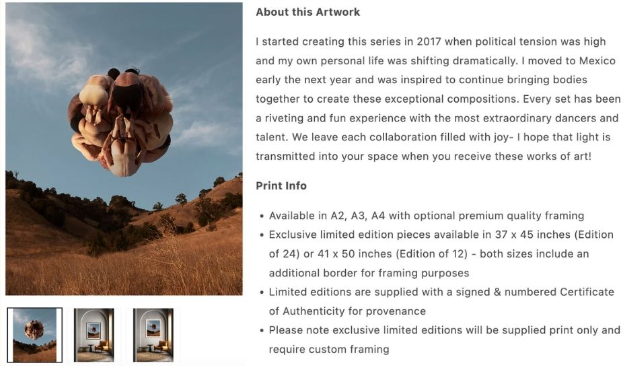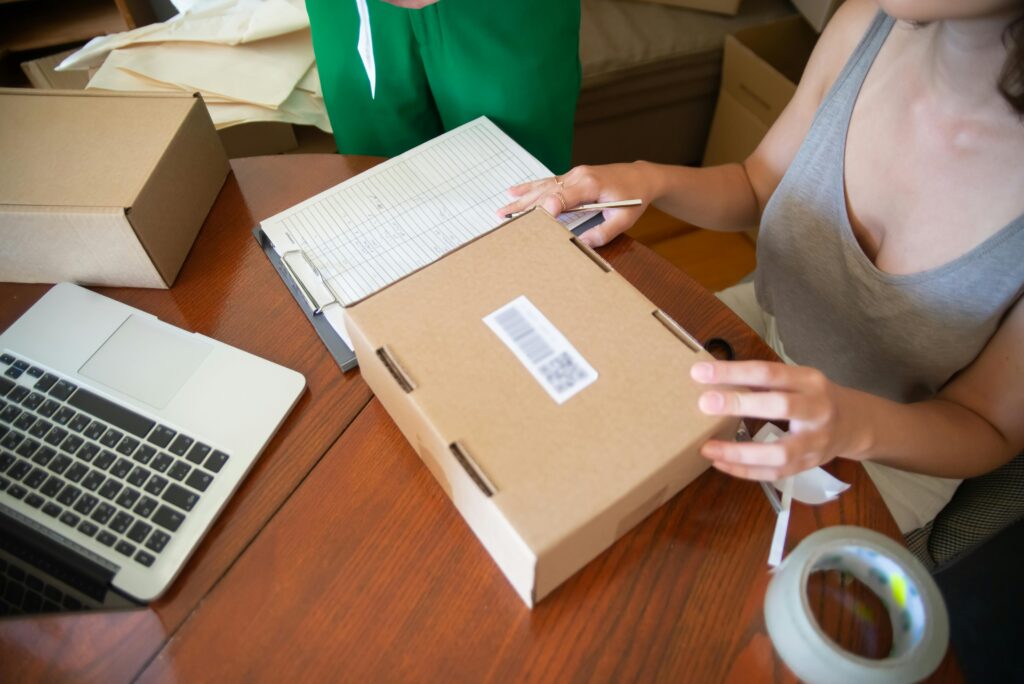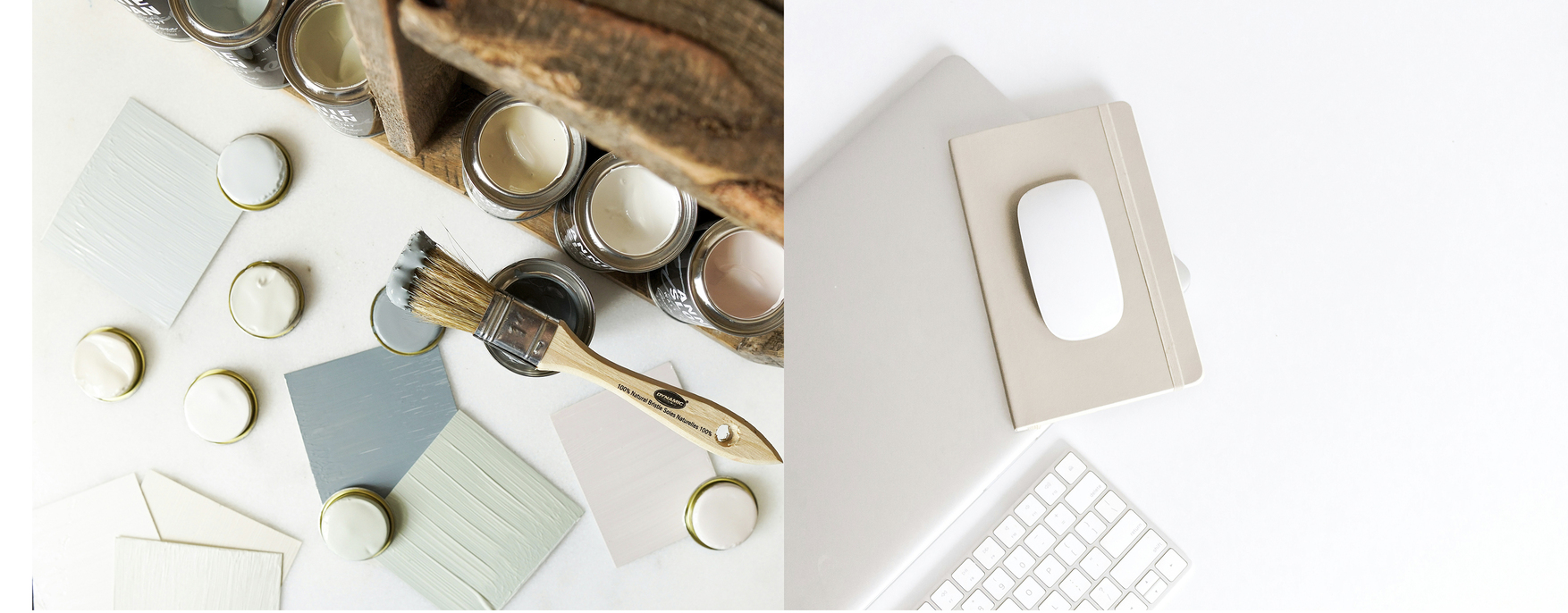If you are looking to make a living out of your art, one of the big steps you need to take is creating and setting up your own online store that gives you both control and flexibility over your work, how it is presented, sold, and even sent to the collectors who have invested in your pieces.
This is a fit-for-all guide that will take you step-by-step through the process of creating an online art store on your professional website. Check these best practices, tips, and hacks you can apply to create your own store from scratch or improve the one you already have.
If you are an artist, gallerist, photographer, or art printseller, keep reading to find out how to create an art eCommerce store that helps you achieve both your creative and business goals.
Get ArtPlacer’s free downloadable checklist of best practices to create your online art store:

Behind every successful online art store is a marketing strategy that helps it target it to the right audience.
Setting up an online art store: define your target audience
The first step into building a successful online art store is defining your target audience, and you can kickstart that task by asking yourself: “What is my niche?”. Your niche is a specific fragment of a bigger audience that shares particular interests. And when it comes to marketing your art, this group of people becomes your target audience.
Fill out this questionnaire to find out what your art niche is.
Your target audience is the group of people who have an interest in your work, these are potential art buyers and art collectors who identify with the subjects or mediums you work with, even with your overall creative process.
To run a successful online art store or e-commerce you need to identify your audience, what they like, where they come from, and even where they spend their time. Your message should be adapted and catered to their needs to make your work findable to them. You can divide your target audience into two main categories: those who have already engaged with you and your work, and those who can potentially express an interest in it.

Look at how photographer Steven Koppel categorized and curated his work into easy-to-scroll collections that help potential buyers find what they are looking for.
Choosing and curating the products for your art e-commerce store
A good online art store allows visitors to navigate freely and easily find what they are looking for. That process starts with defining and curating which artwork will be part of this online selection that will be available for sale. Are you selling original pieces or art prints? This simple question can redefine your whole approach to your upcoming art business.
If you are selling art prints, one of the options you have to contemplate is the “print by demand” option. This service allows you to sell and distribute your work, the piece can be printed in different mediums and even framed, all through a third party without you needing to handle stock, inventory, or shipping.
Whatever path you choose, the next step in building an art e-commerce business that generates a profit is choosing which pieces are going to be available for purchase. A best practice is to group these pieces into categories or collections like “small artworks” or “landscape photography”. Not only will these keywords make your work more findable by search engines but they will also help visitors discover the kind of work they might be interested in investing in.

Your brand should speak loudly and clearly about what you do as an artist and what your work represents.
Defining your brand as an art business
When you are taking your independent work as an artist or gallerist online, especially into the realm of e-commerce, certain graphic elements need to be defined and prepared to showcase a strong and recognizable brand that is visually appealing to potential online art buyers.
What is a brand? For an artist, gallery, or art print seller, a brand is a mix of tangible and intangible elements that encompasses the visual identity, the vision, the purpose, the message, and even the tone used to communicate with your target audience. At this point in the process you need to define your brand and your message, what is it that you want to say to your audience, and why.
Here are a few essential elements you should define to build your art business’s brand:
-Vision and mission
-Logo
-Color palette
-Typography
-Iconography
-Brand style guide
These elements will be used throughout your website and e-commerce page, they should be a reflection of your work and help highlight it. Most of these elements will be born out of your existing work to build a visually cohesive brand that is both appealing and recognizable in the art market.

Create a safe seamless purchase experience that turns visitors into art collectors.
Set up your website for e-commerce art transactions
At the heart of your online website, it’s of course your art store. Some independent artists choose to work with third-party e-commerce websites, but in this article, we will be covering how to host your own store on your artist or professional website.
First, you need to have a website with all the essential branding information we have previously listed. Other essential information you should include it’s your About page, contact information, and social media channels. You should have chosen a website hosting provider and a distinguishable URL. You can check the full list of best practices for art websites here.
Now, you can pick an ecommerce plug-in to add to your website and create a Store Page. This should be listed on the top menu of your site. Websites dedicated to helping merchants sell their products like Shopify, have easy-to-integrate plug-ins with themes and customization options that you can tweak to fit your site’s aesthetic.
The most important part of this step is creating the right setup that will enable visitors to acquire your art pieces with a seamless online purchase experience. Offer different payment options in different currencies to appeal to a global audience.
Some usual payment methods users expect to see are credit and debit cards, and one-click digital payment options. Make sure to add an extra layer of verification to ensure your customers are doing safe transactions through your website.

An artwork product page as seen on the photographer’s Rob Woodcox page.
Create artwork product pages that drive online sales
The next step is to upload the full list of artwork you will be selling, categorizing them inside the store and listing them to make them easy to find for visitors.
Now that your e-commerce page is set up, you need to create product pages for each artwork. These are single dedicated pages each listed product has inside a website, showcasing all the information a visitor needs to know to make a purchase including payment options.
Yes! Each artwork should have its own product page and there are a few essentials you need to cover to ensure this page gets organic traffic and drives more online art sales.
A good artwork product page has certain elements like high-quality images of the art piece and lifestyle images like Room Mockups of your art. Plus, an SEO-enhanced and sales-driven artwork description.
An essential to ensure your customers can see your art in their space are plugins like ArtPlacer Website Integrations that allow visitors to visualize your artwork on their own walls with the help of AR technology.
These try-before-you-buy widgets help the potential customer solve essential doubts at the point of sale like: am I picking the right size art print size? Does this original artwork match my room and decor? How does the art piece interact with the space?
Show your collector how much you care about their experience, and strengthen the bond between potential art buyers and you as an artist or gallerist by providing a personalized experience where they can visualize your art in their spaces, leading to making an informed and satisfactory purchase.
With ArtPlacer Widgets you can add framing options similar to the ones you can offer in your store, solving the main doubt of how the piece will look with a certain mat and frame.
Get the full list of essentials for this page with the downloadable “Create a perfect artwork product page: the guide” webinar on ArtPlacer Academy. Take the lesson by logging into your ArtPlacer account or starting your free trial.

Email marketing can enrich a collector’s art-buying experience and keep them coming for more.
Design an email journey for your online art store customers
If you want to make online art buying something more than a transaction, you need to create an email marketing journey for your business that accompanies the collector through the process. An email can make the difference between a one-time purchase and a frequent buyer.
These emails can be automated using an email server and their content should provide the information the art collector needs at every step of the buying process.
Here are some of the emails you should be sending from your online art store:
–Welcome email: this email sets the tone for all future communications, after a collector has purchased a piece from your store send them a welcome email thanking them for their purchase and highlighting artwork details. Make them excited for what they are about to receive.
–Order confirmation email: once this transaction has been done, send a confirmation email with all related order information like what items were ordered, total cost, discounts (if available), framing and other add-on costs, shipping information, and expected delivery date.
–Transaction confirmation email: create a confirmation email for all other transactions related to a purchase like returns and refunds. Provide your art buyer with a trustworthy and clear art acquisition process.
–Shipping update email: once the artwork has been packed and shipped, send an email with the tracking information and estimated time of delivery so the art buyer can have an updated status of their order.
–Abandoned cart email: did a potential art buyer add one of your pieces to their cart but didn’t follow through with a purchase? Send them a friendly reminder via email highlighting the piece they are interested in and a compelling artwork description followed by a direct “call to action” driving them to buy it in one click.
–Product review: once the piece is in the collector’s hands you have once more chance to engage with them by requesting their feedback. They can share how satisfied they are with the piece they acquire and share comments on the efficiency of the shopping experience.
–Re-engagement email: give your customers a reason to come back, and send them info about available promotions or discounts. Spark their interest by sharing new collections and even similar pieces to the ones they have already acquired.

Packaging should protect your artwork during shipping and also create a good unboxing experience for the collector.
Packing and shipping your sold artworks
When it comes to an online art store packaging plays a variety of crucial roles: it’s supposed to protect and ensure the artwork will arrive safely to its new owner, this is also the first tangible experience the collector will have we the brand and as such it should be a good representation of your brand’s image and it’s perceived value by creating a memorable unboxing experience of an art piece.
Good packaging is there to ensure this valuable piece of art will arrive in pristine condition at its delivery address, avoiding possible damage during transit. This service can also be a differentiating point for your brand, for example: most users these days will feel inclined to invest in environmentally friendly packaging. Partnering up with a packaging company that offers these services allows you to appeal to another demographic.
Once an artwork has been carefully packed it’s time to ship it and then, another window of opportunity opens to offer a prime experience to your customers. A smooth, easy-to-track, and time-conscious shipping experience will leave a positive impression on collectors, reduce complaints and refunds, and most of all: it will give the art buyer another reason to come back.
Through your e-commerce website, you can offer a variety of shipping options (standard, expedited, international, etc), at different price points, allowing the collector to pick the one that fits their needs. Make sure to have a clear shipping policy and showcase any kind of additional fees or costs this service might imply for the buyer.
If you want to optimize shipping and packaging costs and delivery times, make sure to check our special promos on “ArtPlacer Deals” only available inside ArtPlacer Academy. Take the lesson by logging into your ArtPlacer account or starting your free trial.
Now that you know how to create your own online art store from scratch it’s time to start working on your website to create the selling opportunities you desire.



